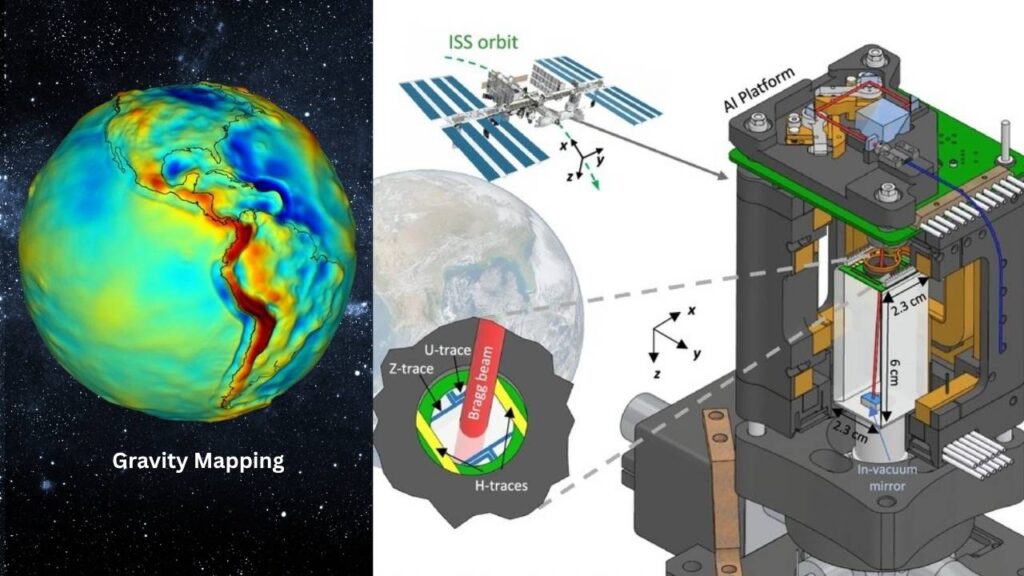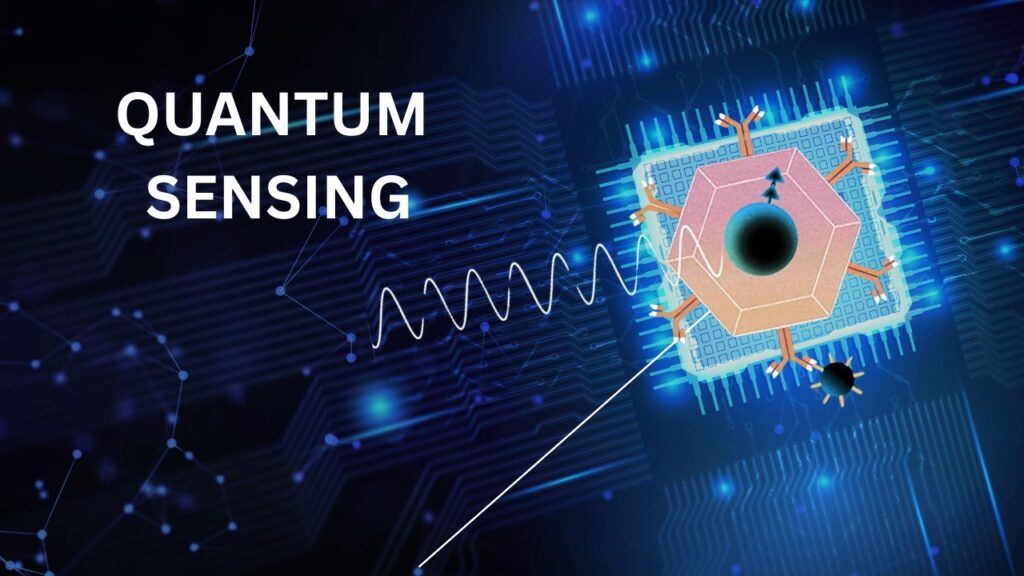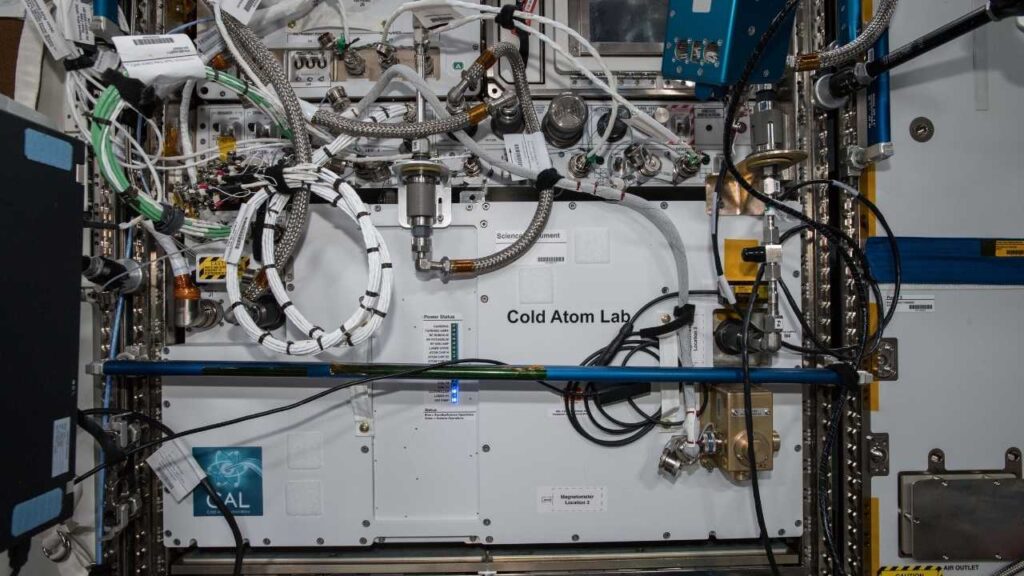NASA Demonstrates Ultracold Quantum Sensor in Space: Imagine a sensor so sensitive it can measure the tiniest changes in gravity or vibrations—so precise it could help us find underground water, track melting ice, or even explore the mysteries of distant planets. This isn’t science fiction. It’s happening right now, thanks to NASA’s breakthrough in quantum sensing with ultracold atoms aboard the International Space Station (ISS).

NASA’s recent demonstration of an ultracold quantum sensor in space marks a giant leap for both science and technology. In this article, we’ll break down what quantum sensing is, how NASA’s Cold Atom Lab is changing the game, and what this means for the future of Earth science and space exploration.
NASA Demonstrates Ultracold Quantum Sensor in Space
| Feature/Fact | Details |
|---|---|
| What is it? | NASA’s Cold Atom Lab uses ultracold atoms to sense gravity and vibrations in space. |
| Where? | International Space Station (ISS) |
| How cold? | Atoms cooled to nearly absolute zero: -273°C (-459°F) |
| Firsts | First use of ultracold atoms to detect environmental changes in space |
| Precision | Up to 10x more sensitive than traditional gravity sensors |
| Size | About the size of a mini-fridge (0.25 cubic meters, 125 kg) |
| Applications | Earth resource tracking, planetary exploration, fundamental physics |
| Official Source | NASA Cold Atom Lab |
NASA’s demonstration of an ultracold quantum sensor in space is a game-changer. By using the weird and wonderful world of quantum physics, scientists can now measure gravity, vibrations, and other forces more precisely than ever before. This technology will help us manage Earth’s resources, explore other planets, and unlock the secrets of the universe. With the next generation of quantum sensors on the horizon, the future of space science—and our understanding of the cosmos—has never looked brighter.
What Is Quantum Sensing?
Quantum sensing uses the strange, powerful properties of quantum physics to measure things that are almost impossible to detect with regular tools. At its heart, quantum sensing takes advantage of how atoms and particles behave at extremely low temperatures—close to absolute zero.

- Ultracold Atoms: When atoms are cooled to near absolute zero, they slow down and start behaving like waves instead of particles. This makes them incredibly sensitive to even the smallest changes in their environment.
- Atom Interferometer: NASA’s sensor uses a device called an atom interferometer. It splits a cloud of ultracold atoms into two paths, lets them travel, and then brings them back together. If anything—like gravity or a vibration—affects their journey, it shows up as a change in the pattern when the atoms meet again.
Why is this important? Because it lets scientists measure things like gravity, magnetic fields, and even tiny movements with unmatched accuracy.
NASA’s Cold Atom Lab: A Mini-Fridge-Sized Quantum Lab in Space
Launched in 2018, the Cold Atom Lab (CAL) is about the size of a mini-fridge. It sits aboard the ISS, orbiting Earth every 90 minutes. Its main job? To cool atoms (such as rubidium) to nearly absolute zero and study their quantum properties.

How Does It Work?
- Cooling Atoms: CAL uses lasers and magnetic fields to cool atoms down to just a few billionths of a degree above absolute zero. At this temperature, atoms can form a Bose-Einstein condensate, a new state of matter where they all act as one big quantum wave.
- Microgravity Advantage: On Earth, gravity pulls everything down, making it hard to keep atoms still for long. In space, microgravity lets these ultracold atoms float freely for much longer, allowing scientists to make more precise measurements.
- Remote Operation: The lab is operated remotely from Earth, proving that even the most delicate quantum experiments can run in the harsh environment of space without hands-on help.
Why Is NASA’s Quantum Sensor a Big Deal?
1. First-of-Its-Kind Measurement in Space
For the first time, scientists used ultracold atoms to measure subtle vibrations aboard the ISS. This is a huge step because it proves that quantum sensors can work in space, opening the door to all kinds of new science and technology.
2. Unmatched Sensitivity
Traditional gravity sensors use mechanical parts that can wear out or drift over time. Quantum sensors, on the other hand, use atoms as their measuring sticks. Atoms are always the same, so the measurements are much more stable and reliable.
- Up to 10 times more sensitive than classical sensors, according to NASA’s Jet Propulsion Laboratory (JPL).
3. Compact and Efficient
The new quantum gravity sensors are much smaller and lighter than traditional instruments—about 0.25 cubic meters in size and weighing 125 kg. This makes them perfect for future space missions, where every kilogram counts.
4. Longer Measurement Times
In microgravity, ultracold atoms can float for much longer than on Earth. This means scientists can take longer, more accurate measurements, which is crucial for studying faint signals like gravitational waves or tiny shifts in Earth’s mass.
Practical Applications: Why Should We Care?
Earth Science and Resource Management
- Water Tracking: Quantum sensors can help map underground water, track melting ice sheets, and monitor droughts. This is vital for managing water resources and understanding climate change.
- Geology: By detecting tiny changes in gravity, these sensors can help find oil, gas, and mineral reserves deep underground.
Space Exploration
- Planetary Science: Quantum sensors could help us explore the composition of moons and planets, searching for water or other resources.
- Cosmology: These tools may even help scientists study dark matter, dark energy, and other cosmic mysteries by measuring how gravity changes in space.
National Security and Navigation
- Navigation: Quantum sensors can improve navigation for ships, submarines, and aircraft—especially where GPS doesn’t work.
- Security: Detecting underground tunnels or hidden structures by spotting gravitational anomalies.
Step-by-Step: How NASA’s Quantum Sensor Works
Step 1: Cooling Atoms
- Lasers and magnetic fields slow down rubidium atoms until they’re just a few billionths of a degree above absolute zero.
Step 2: Creating a Bose-Einstein Condensate
- At this temperature, atoms merge into a single quantum state, acting like one big wave. This makes them easier to control and measure.
Step 3: Atom Interferometry
- The sensor splits the atom cloud into two paths, lets them travel, and then brings them back together.
- If gravity or another force acts on the atoms, it changes the way their waves overlap, creating a pattern scientists can measure.
Step 4: Measuring Environmental Changes
- By analyzing the interference pattern, scientists can detect even the tiniest changes in gravity, vibrations, or magnetic fields.
The Future: Quantum Gravity Gradiometer Pathfinder (QGGPf)
NASA’s next step is the Quantum Gravity Gradiometer Pathfinder (QGGPf) mission. This will be the first space-based quantum gravity sensor designed to map Earth’s gravitational field from orbit.
- Launch: Scheduled for the end of this decade.
- Goal: Validate quantum sensing technology in space and pave the way for future Earth and planetary science missions.
- Partners: NASA’s JPL is working with companies like AOSense, Infleqtion, and Vector Atomic to develop the core technologies.
Researchers Synthesize Elusive Cyclic Tri-Phosphirenium Ion, Advancing Main-Group Chemistry
Quantum‑Si to Participate in GenomeWeb Webinar on Proteomics Data Standardization
FAQs About NASA Demonstrates Ultracold Quantum Sensor in Space
Q1: What is a quantum sensor?
A quantum sensor uses the unique properties of quantum physics—like the wave behavior of ultracold atoms—to measure things like gravity and vibrations with incredible precision.
Q2: Why does NASA use ultracold atoms?
Ultracold atoms are extremely sensitive to their environment. Cooling them to near absolute zero makes them act like waves, which helps scientists detect even the smallest changes in gravity or movement.
Q3: What is an atom interferometer?
It’s a device that splits a cloud of atoms, lets them travel along two paths, and then recombines them. The way the waves overlap tells scientists if anything changed during their journey.
Q4: How will this help us on Earth?
Quantum sensors can help track water, monitor climate change, find natural resources, and improve navigation and security.
Q5: Where can I learn more?
You can find official updates and more information in the Key Highlights table above.






